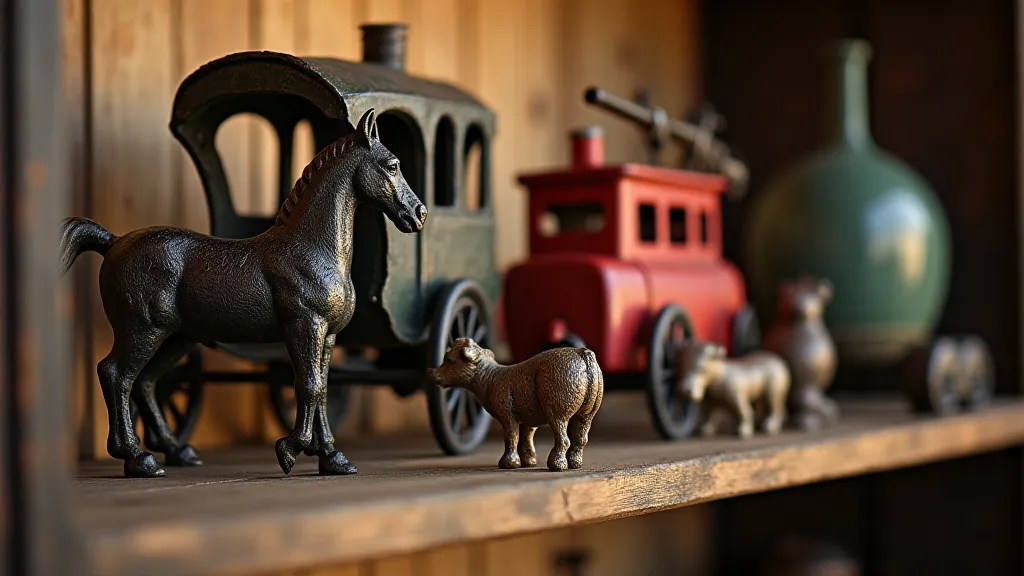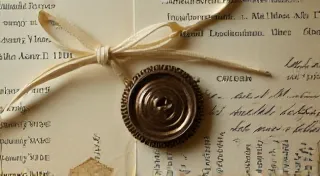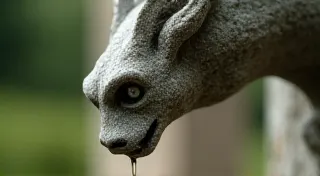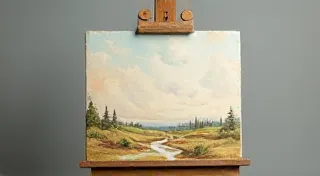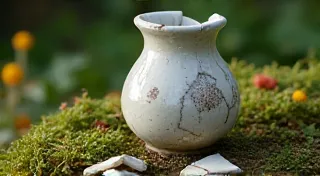From Foundry to Family: The Legacy of Cast Iron Toys in American Culture
The clatter of a cast iron fire truck rumbling down a dusty road, the gleeful shriek of a child pushing a vibrant horse-drawn carriage – these sounds, once commonplace in American homes, now echo through the realm of antique toys, captivating collectors and triggering powerful memories for those who remember a simpler time. Cast iron toys aren't just objects; they are tangible fragments of history, symbols of childhood, and resonant reminders of a bygone era. Their enduring appeal speaks volumes about the American spirit, the joys of play, and the profound connection between objects and emotion.
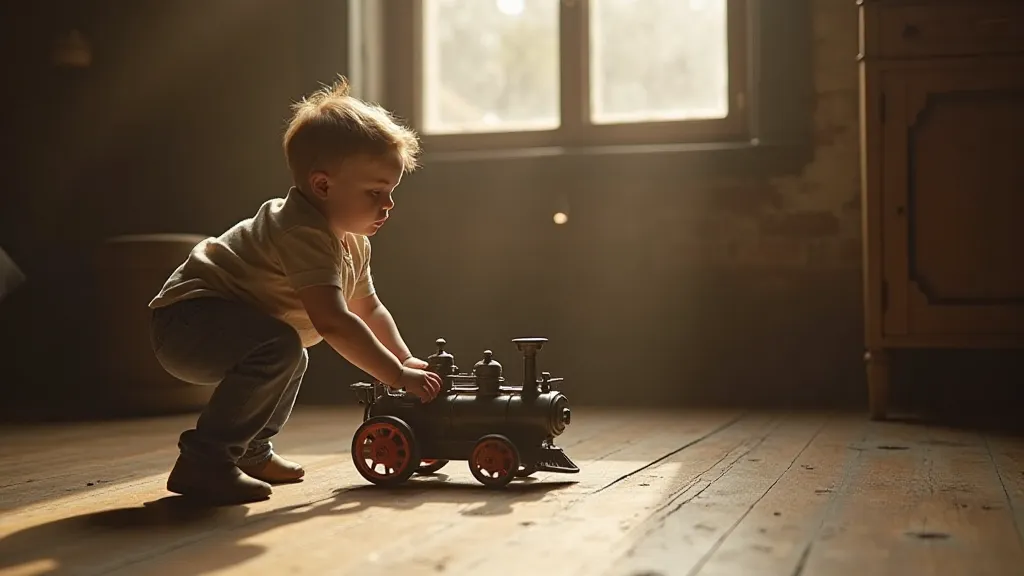
The Rise of the American Toy Foundry
The late 19th and early 20th centuries witnessed the burgeoning of American industry, and the toy manufacturing sector was no exception. The rise of cast iron toys is inextricably linked to the Industrial Revolution. Prior to this period, toys were largely handcrafted, expensive, and accessible only to the wealthy. The advent of mass production techniques changed everything. Foundries, initially producing practical wares like cookware and hardware, began experimenting with casting toys as a profitable sideline. The relative ease and cost-effectiveness of casting iron made it an ideal material for creating durable and relatively affordable playthings.
Companies like J.C. Stevens, Hubley, Kenton, and Whitmore emerged as dominant forces in the cast iron toy landscape. Each foundry developed its own distinct style and specialization. J.C. Stevens, for instance, was renowned for its charming and whimsical animal figures, while Hubley became synonymous with larger, more elaborate vehicles like fire engines and horse-drawn carriages. These companies weren’t just manufacturers; they were cultural architects, shaping childhood experiences and contributing to the popular imagination.
More Than Metal: Craftsmanship and Design
It’s easy to dismiss cast iron toys as mere lumps of metal, but a closer examination reveals a remarkable level of craftsmanship and attention to detail. These weren't assembly-line products in the modern sense. Skilled artisans meticulously hand-painted each piece, striving to capture the essence of the subject matter – whether it was a majestic stallion or a rugged steam engine. The detailing, though subtle, conveys a sense of realism and character that is often missing in today’s mass-produced toys.
Consider the intricate design of a Hubley fire engine. The rivets, the ladder, the painted details of the horses – each element served a purpose, contributing to the toy’s overall appeal and play value. The vibrant paint colors, often applied in multiple layers, were intended to capture a child's attention and spark their imagination. The fact that these toys survived for generations is a testament to both their durability and their inherent design appeal.
A Window into Childhood
My grandfather, a quiet man of few words, had a single cast iron toy – a little blue Packard touring car. I remember him meticulously dusting it, a ritual more akin to preserving a family heirloom than caring for a child’s plaything. He rarely spoke about its origin, but the reverence in his eyes spoke volumes. It wasn't just a toy; it was a connection to his own childhood, a tangible link to a world of simpler pleasures and carefree days.
Cast iron toys evoke a powerful sense of nostalgia. They represent a time when imagination reigned supreme, when a few simple toys could provide hours of entertainment. They offer a respite from the complexities of the modern world, transporting us back to a time of innocence and wonder. They're not just objects to be collected; they’re keys to unlocking cherished memories.
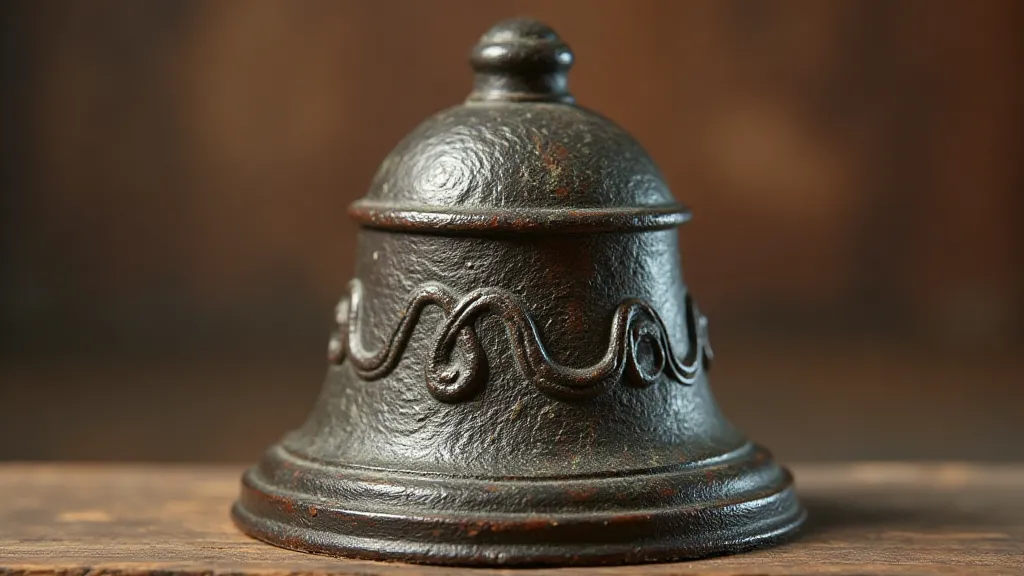
Collecting and Preservation
The collecting community surrounding cast iron toys is passionate and dedicated. Collectors are driven not just by the allure of owning a piece of history, but also by a desire to preserve these cultural artifacts for future generations. The value of a cast iron toy is determined by a variety of factors, including rarity, condition, originality, and desirability. A toy in pristine condition, with its original paint and all its moving parts intact, will command a significantly higher price than a toy that has been heavily played with or restored.
Restoration, a delicate and often controversial subject within the collecting world, plays a crucial role in preserving these toys. The goal of restoration isn't to make the toy look brand new, but rather to stabilize its condition and prevent further deterioration. This might involve cleaning, repairing broken parts, or reapplying paint – always with an eye towards maintaining the toy’s authenticity. Many purists prefer "unrestored" examples, recognizing the patina and character developed through years of play as intrinsic to the toy’s value and story.
The Enduring Legacy
The era of mass-produced cast iron toys largely faded away by the 1930s, eclipsed by the rise of lighter, more affordable materials like pressed steel and plastic. Yet, their legacy endures. They continue to be treasured by collectors, admired by historians, and remembered fondly by those who experienced the magic of childhood in their presence.
More than just toys, cast iron creations represent a unique chapter in American history – a testament to the ingenuity of manufacturers, the power of imagination, and the enduring appeal of simple pleasures. They are tangible links to a bygone era, reminding us of the importance of play, the value of craftsmanship, and the power of objects to evoke profound emotional connections. As long as people cherish memories of childhood and appreciate the artistry of the past, the legacy of cast iron toys will continue to resonate – a clattering, painted echo of a simpler, more imaginative time.
